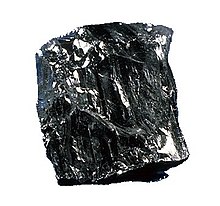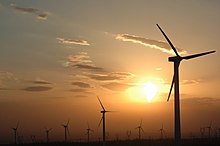Environmental Issues
Human beings may be the smartest of all animals, but surely we are the most destructive. How? Not only to famous things such as the battles/wars, terrorist groups, and abuse of animals, but small things that people don't seem to see. What are those small issues we, humans, create? We'll see through this quick overview over Environmental Issues.
Mining
[edit | edit source]Mining is dangerous towards the environment for a number of reasons. But, these reasons are entitled to their own way of mining. Here, we will name two common ways of mining, and how they are dangerous:
- Strip mining - One of the most dangerous types of mining, but is preferred by the industry as they have higher overload of coal and less labor for mining. Strip mining can clear trees and plants, and can leave scars on mountains (Industries mine through the mountains replacing a layer of the mountain, thus resulting for the mountain to collapse). Strip mining can contaminate water as well. Water that collects into pits (from mining) or run off of waste rock (Tailings) become dirty, thus, dangerous to drink.
- Underground mining - Less destructive than strip mining, but nevertheless, damaging. Underground mining cause displacement of animals (earthworms, moles, prairie dogs, etc.), sinking of the earth, disruption of underground waterways, and toxic being revealed to the public (removing underground earth waste/rock that becomes toxic in contact with air).

Nonrenewable Energy
[edit | edit source]
Let us identify what nonrenewable energy is: Energy from nonrenewable resources. Nonrenewable resources are resources that cannot be replenished/reformed as much as their demand for its need. So coal and petroleum are fossil fuels. Fossil fuels are formed from the remains of organisms living years and years back. Fossil fuels are nonrenewable because, our definition that we mentioned before, they are being used more than they are being formed (in simple perspectives).
Now that you what nonrenewable energy is, we can explain why they are dangerous. Burning of fossil fuels causes pollution in the air. Polluted air can cause problems for you, from acid rain to asthma! Acid rain can damage buildings and kill plants, while asthma is associated with asthma attacks, which reduces the space of air in your lungs. Asthma attacks are life-threatening and need immediate attention.
Another reason nonrenewable energy is harmful are oil spills. Oil spills damage the soil farmers grow our crops on, pollute our drinking water, and kill/injure animals in the ocean.
Renewable Energy
[edit | edit source]
Renewable Energy is the opposite (but same in the way) of Nonrenewable Energy. Now... can you define it? If your definition was around the ballpark of "Energy from renewable sources", then you are correct! What are renewable sources? Renewable sources are resources that can naturally be replenished on time for human needs. A couple of examples of renewable resources are sunlight, wind, water, etc..
Even though nonrenewable energy is more catastrophic than renewable energy, renewable energy still poses a danger.
- Solar Power - Energy from the sun. Not very reliable because the sun is not ALWAYS apparent (clouds).
- Wind Power - Wind is renewable and nonpolluting. It takes up a lot of space, though, and needs to be put in an area of sturdy and a continuous relay of wind.
- Hydroelectric dams - Energy from water controlled by a dam. Sadly, only a few places can hold a dam, and even if those places could be able to hold dams, it ruins ecosystems and can shift habitats.
- Geothermal Energy - Provides little of world's energy and few places have hot bedrock close by the surface. Areas that do might not be near a civilization of humans. Water in geothermal energy can pollute lakes and streams.
Advantages of Renewable Energy
[edit | edit source]- Eco friendly
- Non conventional
- Abundant
What can you do for the environment?
[edit | edit source]- Use cycle or go by walk to cover short distances
- Use solar panels
- Plant trees
